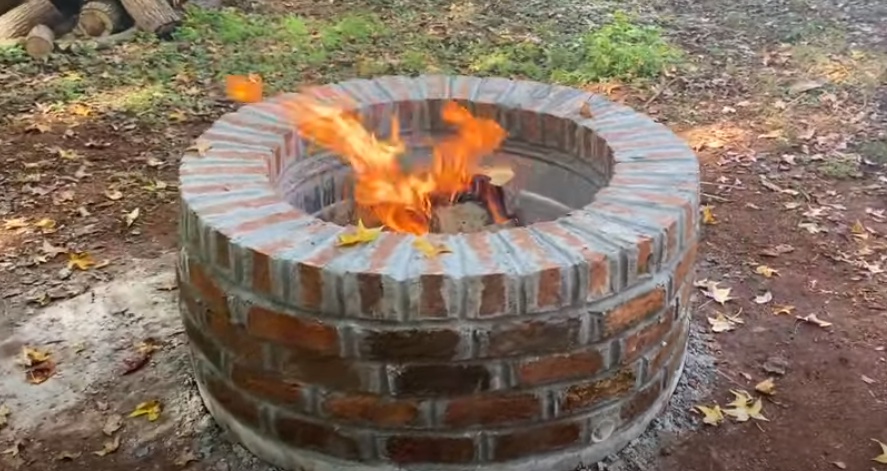A fire pit can transform your outdoor space into a cozy and inviting gathering spot for family and friends. To ensure a safe and enjoyable fire pit experience, it's important to prepare the foundation properly. In this blog post, we will explore the essential materials you should consider placing at the bottom of your fire pit. From protecting the ground to improving airflow and optimizing heat retention, these materials will enhance your fire pit experience.
What are the Suitable Materials for the Bottom of a Fire Pit?
Here are the materials that can be used for the bottom of a fire pit:
Sand
Sand is an excellent material to place at the bottom of your fire pit. It provides a protective barrier between the fire and the ground, preventing heat transfer and potential damage to the surface beneath. Sand also aids in drainage, reducing the risk of water accumulation that can lead to cracks in the fire pit. Spread a layer of sand, around 2 to 3 inches thick, evenly across the bottom of your fire pit to create a solid base.
Gravel
Adding a layer of gravel on top of the sand can further enhance the foundation of your fire pit. Gravel improves drainage and acts as a heat conductor, helping to distribute heat more evenly. It also creates a stable surface, preventing the accumulation of water and reducing the risk of mud or soil being tracked into the fire pit area. Aim for a layer of gravel around 2 to 3 inches thick to ensure adequate drainage and stability.
Fire Bricks or Pavers
Fire bricks or heat-resistant pavers are another valuable addition to the bottom of your fire pit. These materials are designed to withstand high temperatures, preventing heat from seeping into the ground and causing potential damage. Fire bricks or pavers can also help to insulate the fire pit, maximizing heat retention and promoting efficient burning. Arrange them in a circular pattern or create a solid base at the bottom of your fire pit to provide a durable and heat-resistant surface.
Lava Rocks or Fire Glass
Lava rocks or fire glass can be used to add an aesthetic appeal to your fire pit while offering practical benefits. These materials are heat-resistant and can handle high temperatures. Lava rocks are natural and provide a rustic look, while fire glass offers a modern and elegant touch with its reflective properties. Both options enhance airflow, allowing oxygen to circulate and fuel the fire, resulting in a cleaner burn. Spread a layer of lava rocks or fire glass on top of the base materials for a visually pleasing and functional fire pit.
Metal Mesh or Grate
To further enhance safety and prevent debris from falling into your fire pit, consider placing a metal mesh or grate on top of the base materials. This additional layer acts as a barrier, preventing larger embers and debris from escaping the fire pit. It also promotes better airflow by creating space between the fire and the bottom, ensuring a consistent and efficient burn. Choose a durable metal mesh or grate that fits the size of your fire pit for optimal protection and performance.
Fire Pit Safety Tips
Below is a list of safety fire tips when using your fire pit:
- Avoid using any fire accelerants like gasoline or lighter fluid, as they can cause uncontrollable fires. Stick to safer alternatives for starting and maintaining the fire.
- Ensure that children and pets are always kept at a safe distance away from the fire pit. Establish clear boundaries and supervise their presence around it.
- Do not burn garbage or paper in your fire pit, as it can release toxic fumes or spark uncontrolled flames. Stick to burning dry, seasoned wood or designated firewood.
- Once the ashes have completely cooled down and are dry, carefully scoop them out and properly dispose of them in a metal container. Avoid disposing of ashes in flammable or combustible materials.
- Choose a safe location for your fire pit, away from hazard-prone zones such as low-hanging branches, dry grass, or flammable structures. Maintain proper clearance around the fire pit to minimize the risk of accidental fires.
- Never leave the fire unattended. Make sure someone is present to monitor and manage the fire at all times. If you need to leave, ensure the fire is fully extinguished.
- Consider investing in fire safety equipment such as a fire extinguisher, fire blanket, or spark screen. These tools can help you quickly respond to emergencies and prevent accidents from escalating.
Remember, practicing fire safety precautions is essential to enjoy your fire pit responsibly and minimize the risk of accidents or damage.
Conclusion
Investing time and effort in preparing the bottom of your fire pit with the right materials can significantly improve your overall fire pit experience. By using sand, gravel, fire bricks or pavers, lava rocks or fire glass, and a metal mesh or grate, you'll create a safe and functional foundation that enhances both the aesthetic appeal and the performance of your fire pit. Remember to always prioritize safety and enjoy the warmth and ambiance of your well-prepared fire pit with peace of mind.


No comments yet